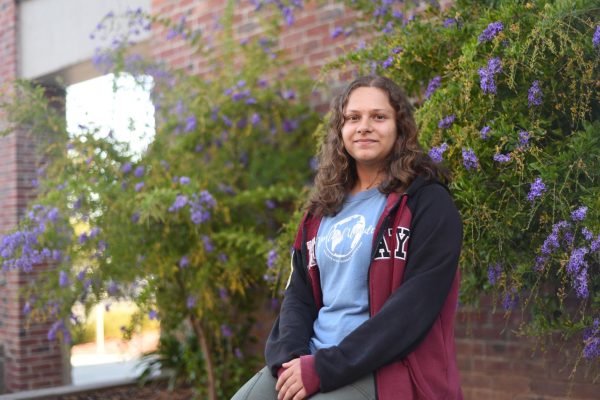As the lunch bell rang at 1:25 p.m., freshman Ruchika Varanasi clutched the lunchbox her mother packed as she exited her fifth period classroom. She walked past the open doors of the cafeteria and maneuvered around the swarm of students lined up outside, grateful that she could readily eat a lunch catered specifically to her needs, especially due to her severe allergies to nuts, dairy and egg.
When Varanasi’s mother fed her dairy and eggs at a young age, she had to be taken to the hospital, following a reaction that gave her bad hives and caused her to throw up. Varanasi is one of nearly 3.2 million children with food allergies in the United States, according to a 2015-2016 estimate by the U.S. Census Bureau. That translates to 8% of American children, or around two children per 30-student classroom.

Due to Varanasi’s allergies, the foods she can eat are mostly limited to the few vegan options offered on the school menu. However, as a result of the lack of safe options available and the risk of cross-contamination, Varanasi ultimately chose not to eat meals from the cafeteria.
“They’re doing better,” Varanasi said. “They have vegetarian options, but they’re not doing a good job at having options for people who are allergic to dairy [or] eggs and other common food allergies that a lot of people have.”
All five FUHSD schools are participants in the National School Lunch and Breakfast Programs (NSLBF), federally-assisted programs managed and regulated by the federal, state and local governments. District Manager for Nutrition Services Divya Puri acknowledges that these regulations decide how much from each food group – like meat, vegetables, grains and dairy – are allocated to meals. She adds that 80% of grains included in meals must be whole grains and that a lot of those restrictions define what can be put on the menu.
Due to the requirement set by the NSLBF, the FUHSD nutrition program often turns to local or federally-endorsed vendors to source their ingredients, who can offer greater volumes of food at cheaper prices. While this allows the school to spend less and helps support local businesses and farms, it also limits the kinds of meals that can be offered for students with dietary restrictions, as a lot of the vendors don’t offer dairy-free or gluten-free options. Thus, Puri explains that these restrictions are a “tricky slope” that the team is attempting to navigate.
Unlike Varanasi, MVHS Food Services Manager Edgar Rodriguez believes that the current menu options are adequate, especially in comparison to the lunch options that many of today’s adults had growing up. He adds that the school system even allows students with special dietary needs to fill out a medical request form that will have the cafeteria provide meals made specifically for them.

Puri says that students should turn to “real medical forms and doctor’s notes” if they would like to have a meal catered to their dietary restrictions. However, Varanasi disagrees, claiming that this is unfair to students.
“I feel like we shouldn’t have to prove that we have dietary restrictions and get specialized food because sometimes, people won’t be able to get the resources they need to prove it, like a health test or doctor’s note, but they know they have it,” Varanasi said.
There are a multitude of challenges to food services, so Puri says that the program does its best to adapt on the fly while always being open to feedback. One of her goals for the future on top of fulfilling current plans is to implement more gluten-free options in the school lunches, adding to the consistent breakfast options. However, she notes that there will still be difficulties.
Under Puri, FUHSD Nutrition Services has been piloting lactose-free milk at Lynbrook, but due to the sheer volume needed for students as well as supplier availability, adding it to all sites has not been possible. Similar difficulties would inevitably be an obstacle when Puri and her team look to expand the menu in the future, especially for items like gluten and dairy-free ingredients where there are fewer suppliers with less capacity and higher prices.
Regulations and sourcing have a significant impact on the school menu and the school administration’s capacity to expand it. Regardless, Puri is clear in her intent to cater to students to the best of her ability and continue improving the menu with all students in mind.
“Feedback helps us grow,” Puri said. “We want to be inclusive. We’re trying our best within what we have, [considering] sheer volume, time and everything. But our staff is really passionate and really keen and they believe in quality of food, so we hope to continue to grow and serve our students to the best we can.












